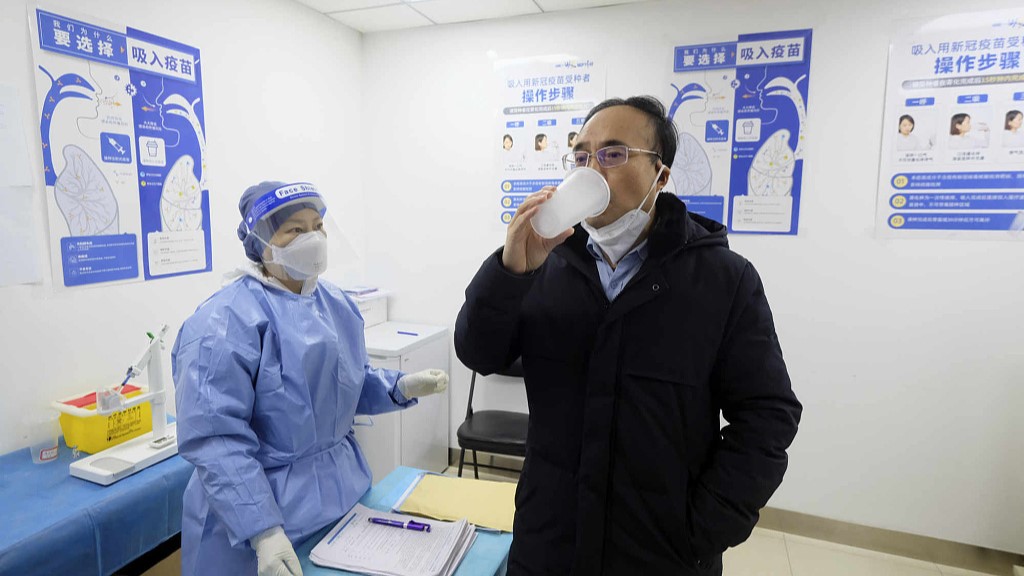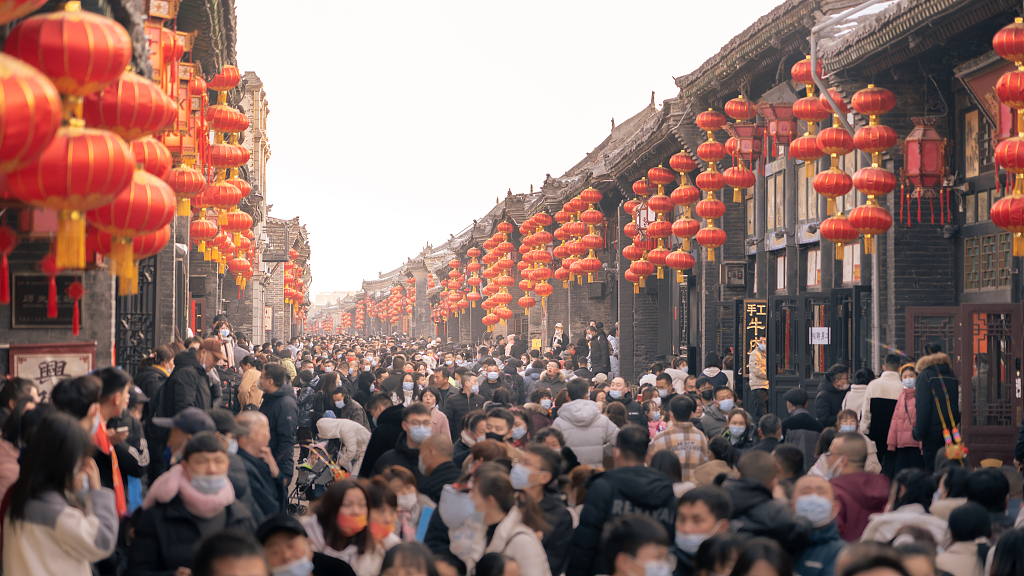
People stroll and shop along Hubu Lane, a landmark of Wuhan and a symbol of "Wuhan Snacks", central China's Hubei Province, January 24, 2023. /CFP
People stroll and shop along Hubu Lane, a landmark of Wuhan and a symbol of "Wuhan Snacks", central China's Hubei Province, January 24, 2023. /CFP
In the wake of an extraordinary battle which lasted three years, China, the world's most populous country, has successfully pulled through the COVID-19 epidemic, creating a miracle in human history, according to a meeting of the Standing Committee of the Political Bureau of the Communist Party of China (CPC) Central Committee on Thursday.
The country's COVID-19 cases fell to the lowest on February 6 since December 9, 2022, according to data from the Chinese Center for Disease Control and Prevention, and its COVID-19 fatality rate remained the world's lowest.
Meanwhile, the hustle and bustle has returned across the country, and most people have resumed their normal life.
Dynamic, scientific and precise response
Over the past three years, China has always been putting people's lives and health first and adapting its COVID-19 response in light of the evolving situation.
When the coronavirus was detected in central China's Wuhan in late 2019, it was causing surging infections and deaths. The Chinese government made a resolute and courageous decision to lock down the city of 11 million residents.
It took China three months to contain the outbreak in Wuhan and stop it from rippling to other parts of the country.
After that, China reacted quickly to stamp out over 100 local outbreaks to safeguard the lives and health of the 1.4 billion people across the country.
In the same time, China had been stepping up research and development of COVID-19 vaccines, and rolled out its first COVID-19 vaccine for the public under conditional use on December 31, 2020, less than a year after the initial outbreak.
After that, the government has been pushing a nationwide vaccination drive to build up immunity protection for the people, which has proved to be effective in preventing deaths and severe cases.
Over the three years, as the dominant coronavirus variants evolved from Alpha to Beta to Delta and then Omicron, with increasing transmissibility, but decreasing virulence and mortality rate, China has been making incremental changes to its COVID-19 measures to make them more scientific and precise.
Since November 2022, China has kept optimizing and adjusting its COVID-19 prevention and control measures, with the focus shifting from preventing infections to preventing severe cases.
The country's COVID-19 response has made a smooth transition in a relatively short time, with more than 200 million people accessing medical services, nearly 800,000 severe cases receiving proper treatment, and the country's COVID-19 fatality rate remaining the world's lowest, Thursday's meeting noted.

A resident gets a dose of inhalable COVID-19 vaccine in Beijing, China, December 19, 2022. /CFP
A resident gets a dose of inhalable COVID-19 vaccine in Beijing, China, December 19, 2022. /CFP
Looking ahead
As the COVID-19 situation has continued to improve in China and the virus is still spreading globally, China has been speeding up efforts to consolidate what has been achieved over the years in fighting COVID-19 and getting better prepared for future outbreaks.
The CPC leadership urges efforts to improve COVID-19 monitoring and early warning mechanisms, through which timely and accurate early warnings can be issued and necessary emergency control measures can be taken.
It also calls for scientific planning for the next-stage vaccinations based on the mutation of the coronavirus and the efficacy of the vaccines, highlighting the importance of improving the vaccination rate among the elderly.
The efforts to strengthen the production and supply of medicines and medical materials are also underscored, and the need to continue optimizing the layout of resources is stressed.
Efforts should also be made to advance scientific and technological breakthroughs in the health sector in a coordinated manner, and improve life and health science and technology, according to the meeting.

Tourists in the ancient town of Pingyao in Jinzhong, Shanxi Province, China, January 23, 2023. /2023
Tourists in the ancient town of Pingyao in Jinzhong, Shanxi Province, China, January 23, 2023. /2023
China's economy reviving
China's economy is also getting back on the right track, showing strong resilience and recovery momentum, multiple indicators have shown.
Travel in the country saw a significant rebound during the 2023 Spring Festival travel rush, which lasted 40 days from January 7 to February 15. A total of 4.73 billion passenger trips were made nationwide as the country embraced its first Chinese New Year with downgraded COVID-19 measures.
Nearly 1.6 billion passenger trips were made via trains, planes and waterways, which marked a 50.5 percent increase from the same period of 2022 and accounted for 53.5 percent of the volume in 2019, according to data from the Ministry of Transport.
During this year's seven-day Spring Festival holiday, about 308 million domestic trips were made, an increase of 23.1 percent year on year. Domestic tourism revenue totaled 375.8 billion yuan (around $54.68 billion), up 30 percent year on year, according to data from the Ministry of Culture and Tourism.
Consumption has also been rebounding. Sales revenue of China's consumption-related sectors increased 12.2 percent from the same period last year, data from the State Taxation Administration showed.
In January, the purchasing managers' index (PMI) for China's manufacturing sector came in at 50.1, up from 47 in last December, returning to expansion territory for the first time since September 2022, according to data from the National Bureau of Statistics.
The activities of small and medium-sized enterprises (SMEs) also picked up in January. The Small and Medium Enterprises Development Index, calculated based on a survey of 3,000 SMEs, came in at 88.9 last month, reversing a downward trend, according to the China Association of Small and Medium Enterprises.